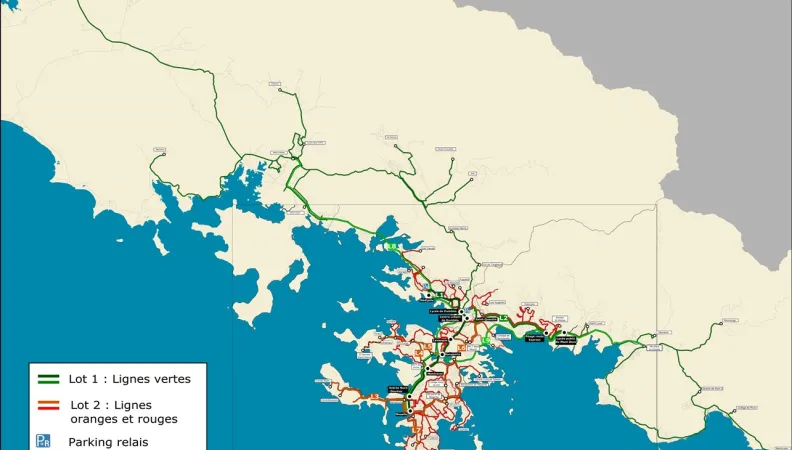Share the page
Restructuring the public transport network in Greater Nouméa
Project


-
Project start date
-
Status
Ongoing
-
Project end date
-
-
Project duration
-
25 years
-
AFD financing amount
-
8700000000 CFP Franc
-
Country and region
-
Location
-
Greater Nouméa
-
Type of financing
-
Beneficiaries
-
Urban Transport Authority (SMTU)
The Urban Transport Authority is implementing a bus rapid transit project, the Néobus, with the aim of addressing the challenges of urbanization and development in Greater Nouméa. Its implementation is being combined with a complete overhaul of the public transport network in order to improve mobility in the city.
Context
Greater Nouméa has some 180,000 inhabitants and is experiencing significant population growth, particularly in the municipalities in the outskirts, which leads to urban sprawl and sharp growth in the flows of people. In 2013, the number of daily trips in the city stood at 410,000, with an average daily travel time of 63 minutes and a lot of travelling back and forth between home and work.
Yet the city’s growth is set to further increase travel requirements: the Intermunicipal Authority of Greater Nouméa (SIGN) forecasts 500,000 daily trips in Greater Nouméa by 2020. In this context, the predominance of private cars as a means of transport weighs heavily on the organization of mobility in the city and on the quality of life offered to its residents. It creates traffic jams, pollution and various nuisances, making it difficult to access economic and urban centers, particularly for the most disadvantaged. The TANEO project aims to provide integrated and attractive public transport services and is a key area of the city’s development policy.
Description
The first Néobus line will connect the center of Nouméa to the Médipôle medical center in Dumbéa-sur-mer. It will be 13.3 km long and comprise 24 stations approximately 600 m apart, including 8 interchanges and two parking relays. This bus rapid transit system will have two reserved lanes and priority at traffic lights. It will offer high-quality transport in terms of frequency (a bus every 5 minutes at peak times), the scale of the service (from 5 am to 9 pm), comfort, passenger information and access for persons with reduced mobility. It will be the backbone of Greater Nouméa’s future public transport network, called TANEO.
The network’s lines will be restructured on the basis of Néobus in order to provide extensive services in the entire city. This new network will have a single ticketing system and tariff and will provide passengers with easier connections and better information.
Finally, the project plans to develop soft modes, with the creation of cycle paths and pedestrian areas near the Néobus. The total cost of Line 1 is estimated at FCFP 20bn. The commissioning of Line 1 is scheduled for 2019.
Impacts
This structural project for the city will:
- Improve mobility, by facilitating access to health and education services, employment and administrations, and providing an economic alternative to private vehicles and generally reducing overall transport costs (travel times, road safety and adverse environmental effects;
- Preserve the living environment of residents and fight against climate change;
- Contribute to spatial planning by linking up the city’s existing and future centers and opening up certain old neighborhoods;
- Promote economic activities by facilitating travel to city centers and commercial areas. The number of passengers expected is estimated at 9.2 million a year at commissioning and 15.2 million in 2030.


